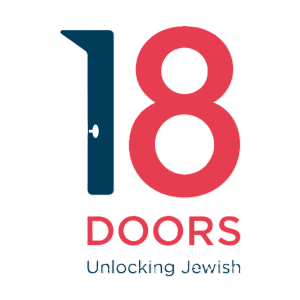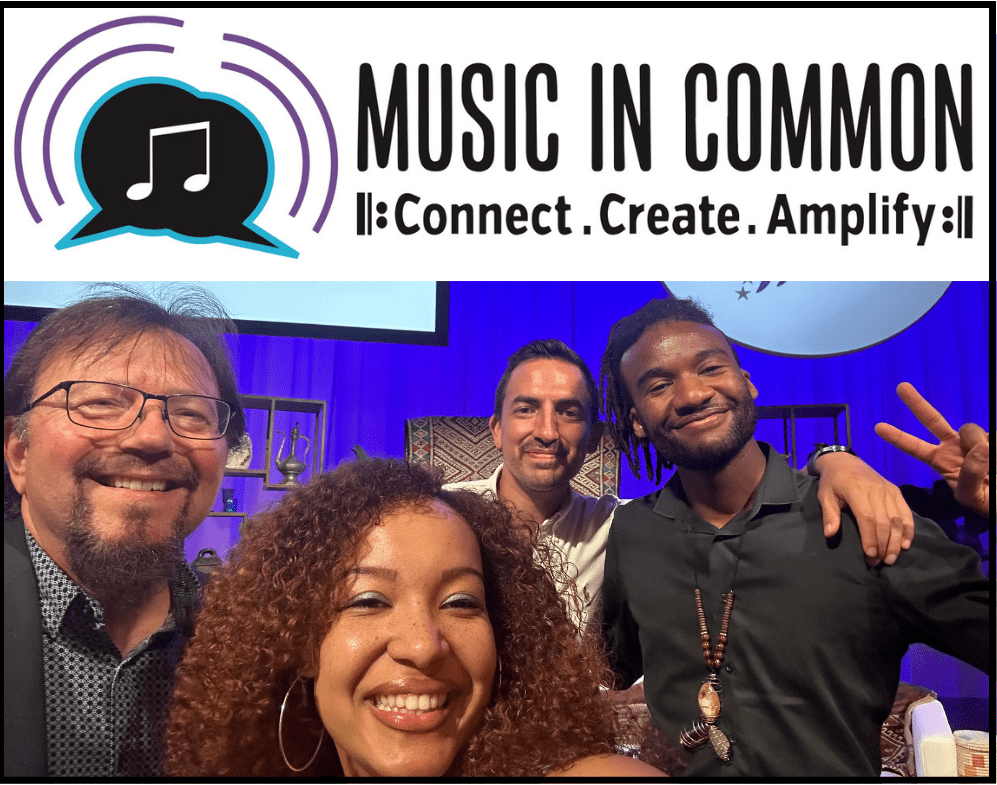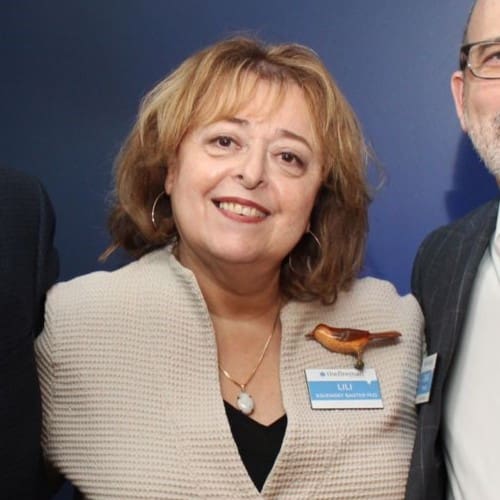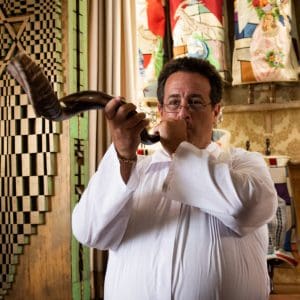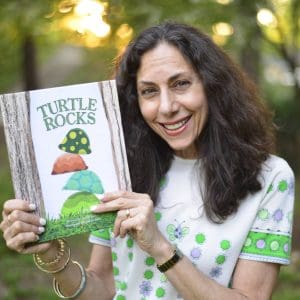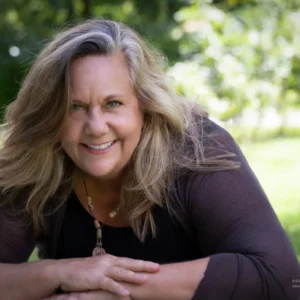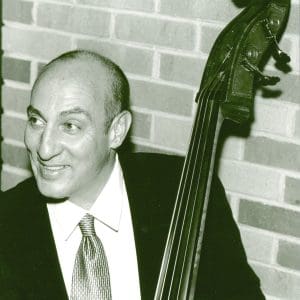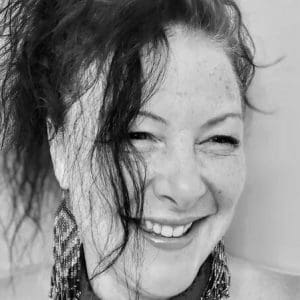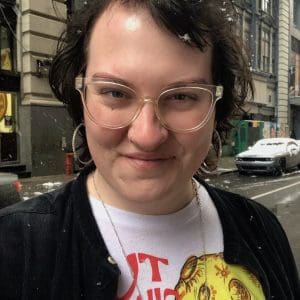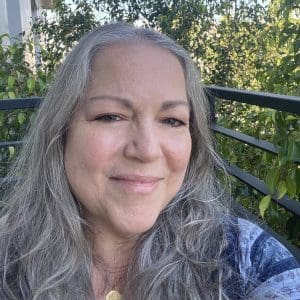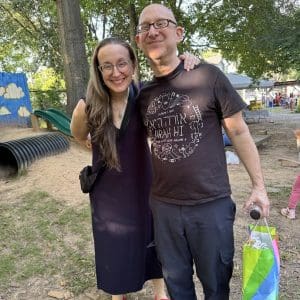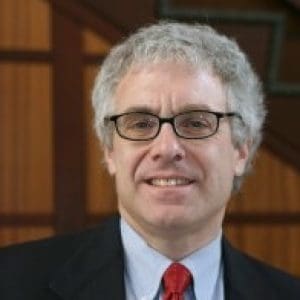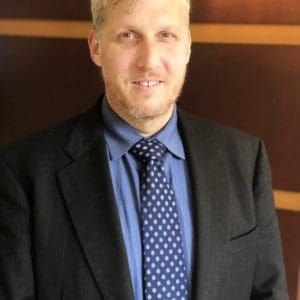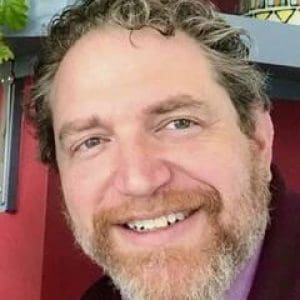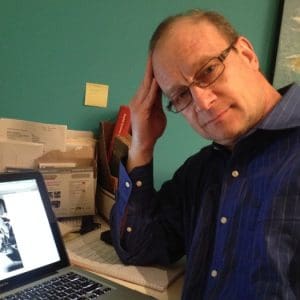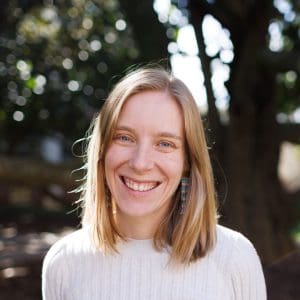Finding our Heart in Prayer
Ramah Reflections
By Rabbi Laurence Rosenthal
August 3, 2016 | 28 Tammuz 5776
I hit the three week slump. I was warned that it might come. After a few weeks living up at camp the sore throat comes, the run-down feeling. Although Camp Ramah is a beautiful place, it is camp after all. The level of hygiene of the kids varies, and I'm constantly going in and out of air conditioned spaces (which is never healthy). Although my living quarters are very nice, it's not home so sleep isn't ideal. I am trying to keep up with my regular job from afar while being present here at camp. I spend most of the day damp and sweaty – never fully dry. So no wonder I'm beginning to slump.
As the third Shabbat was approaching, I used my Erev Shabbat prep time on Friday afternoon to try and nap. After about an hour, I rocked myself awake and began making my way out of our room for Shabbat service. I was late and all the campers were already at the amphitheater for Kabbalat Shabbat so the camp felt empty. As I made my way down a large set of railroad tie stairs through the woods with a beautiful tree canopy, I could hear the singing. The kids were all gathered together in our outdoor prayer space and they were singing the famous Friday night liturgy, Lecha Dodi. Written by the 16th century Sfat Mystic, Rabbi Shlomo Halevi Alkabetz, hearing it from afar in such a picturesque setting, reverberating through the hills and valleys surrounding me, I imagined that this was what it was like for those daveners in the Israeli mountainside 500 years ago. Our tradition relates that the mystics of Sfat used to walk through the fields and orchards welcoming in the Sabbath and the Shabbat Bride while singing this song.
As I made my way down the hill I could hear the sound of five hundred kids singing Lecha Dodi – truly a celestial choir singing to the God of Israel. When our midrashic tradition says things like, the world is only sustained by the voices of children singing in joyous song, my walk down the hill really made this statement clear for me. It was magical. As I made my way into the beautiful outdoor amphitheater, the seats were filled (as they are each week) with all the campers, counselors and Shabbat guests singing at the top of their lungs in praise and love for God, Judaism, the Sabbath and our tradition. Like a shot of adrenalin, my fatigue was gone. My run-down feeling evaporated and I entered Shabbat with a neshama yetara, a second soul.
I've spoken in the past about this special secondary spirit which our rabbis say enter us when we begin Shabbat and leave as we finish with the Havdallah ceremony. There are even some who equate the smelling of the b'samim, spice box, during the Havdallah ceremony to a kind of smelling salts trying to revive us in case a bit too much soul leaves us at the end of Shabbat. Although I speak about the neshama yetara, I have to be honest…I don't really feel its presence when I normally start Shabbat. Brooke and the kids can tell you. After services, it isn't uncommon for me to come home, make Kiddush, have Shabbat dinner with the family and then pass out on the couch. Entering Shabbat exhausted from a long week, although understandable, is not how our rabbis intended us to celebrate this holy occasion. Shabbat is supposed to be the apex of our week, not the discarded conclusion. If we work all week simply to smash into the Sabbath and collapse within the first few hours, it is like training for an important race and falling down at the starting line.
Shabbat at camp is different. There was a new ruach, a new spirit which entered into me and kept ahold for the entire twenty-five hours. How did this happen? Did I just get a second wind? I don't think so. By starting Shabbat together with so many others singing and dancing, I was able to find strength and energy from their spirit and souls. It is a powerful thing to be together with others having a concurrently singular and collective purpose. I felt similar when I once prayed Kabbalat Shabbat at the Western Wall in Jerusalem. Gathering with a group of Jews focused and engaged in the sacred and holy is a source of immense strength, akin to drinking from a spring when you are dying of thirst. This is why our tradition created the Kabbalat Shabbat service, as a way of instilling in us a new and energized soul to carry us through our celebration, learning and fellowship for the twenty-five hours of Shabbat. However, it isn't just the words that make it special – it is the community that gathers together to create the spirit and ruach. As I walked down the steps the voices of the campers got louder and louder; as I came closer and closer to the amphitheater, I could feel my soul reviving and growing stronger; I was becoming blessed with the power and strength of a collective, holy community in devotional prayer together.
How do I bring the prayer spirit, energy and ruach back from Ramah Darom to our sacred Ahavath Achim spaces, and infuse a similar spirit into our own service? It's not going to be easy. Our Friday night experience is tough for a few reasons. Our numbers are small and some in the room come for an experience that is mellow, meditative and relaxed. They want to sit and just let the prayer and songs wash over them. I get it – it's a long week. However, if we are going to get that second soul, we can't just sit and wait patiently – we have to sing for our soul. Within my tenure at Ahavath Achim, we have made various attempts to solicit participation. Early on, before sundown, we would invite classical guitarist Joel Williams to accompany our prayer leaders on guitar for Kabbalat Shabbat. We brought in full bands with several iterations of AAbsolute Shabbat and AAbsolute Unplugged. Although some of this was successful for creating a meaningful and uplifting prayer experience, the musicians themselves would tell you that the missing ingredient were the voices of the congregation. People, on the whole, did not sing. In later years, we tried to go a bit more traditional with a Shlomo Carlebach style-service. Again, the missing ingredient was the participation of the congregation.
Always the first suggestion for making our prayer experience more like what we have up at Camp is to invite the Camp kids to services. If the kids are bringing so much ruach to the experience, then why don't we just get the kids to come and be part of our service back in Atlanta? We will provide the space and they will supply the ruach! Unfortunately, it's kind of a Catch 22. They don't want to come because our service lacks spirit. However, if they came then maybe the service would be spirited. Round and round we go!
Look, I understand that there are a multitude of reasons why people come to our congregational prayer service and I don't ever want to disenfranchise somebody who is looking for a sedate, meditative place to feel connected with a quiet, prayerful experience. However, I truly believe that there is something at stake if we allow a prayer service to go by without attaining that second soul. The key is creating prayer that is soulful; using melodies that are powerful, not just familiar, and finding a way that all voices collect together to become a celestial choir singing praise and thanks upward towards God. So how do we do it? How can we all get comfortable with the prayers so that singing is not something we whisper, but use our full breath and voice to weave our voices together?
The Talmud Chagiga teaches that the prayers of Israel are carried upwards and a ministering angel ties them together and makes crowns which then float and land gently onto the head of God. What kind of material is Ahavath Achim sending up? Twine or gold chain? Rusted metal or polished silver?
How can we get a critical mass of people to our Friday night services to begin Shabbat together in joyous song and praise? How can we come together to help instill in each of us this neshama yetera, a second soul? Is the problem the Hebrew?! We have a transliteration booklet so language need not be a barrier. Do we need a CD or downloadable MP3s for congregants to listen to during the week? What about a singing table at Kiddush every Shabbat afternoon where our prayer leader will lead us in songs and melodies after lunch, and maybe even a little Birkat HaMazon (Grace after meals)? What are your ideas? How can we find our voices to rise up and join together in song and praise?
What the Heck is He Doing Up There?
Ramah Reflections
By Rabbi Laurence Rosenthal
July 27, 2016 | 21 Tammuz 5776
Although I have been trying to keep my Ramah Reflection articles focused on musing, ideas and inspiration that I can bottle up here in Clayton, GA and then deliver to our spiritual home down south in the heart of Atlanta, I can sense the question that many of my readers might be having…What is the Rabbi actually doing up at camp? If he needed a vacation he should have just taken one. If he's got childhood issues, shouldn't he see a therapist rather than trying to work them out up at camp?
Since there are those who want to know, this essay is going to try and blend the two – A bit of reflection and inspiration for our congregation while attempting to explain a bit of what I'm doing way up here in the beautiful North Georgia Mountains.
I am a part of the Y'hadut staff– Judaic faculty. Along with about 6 other educators – half of them rabbis, my primary responsibility is to teach the kids what it means to be Jewish and how to 'do' Jewish. I've been assigned four Eidut (groups) and I am charged with infusing Jewish concepts, philosophy, theology, ritual and tradition into their camp experience. My kids range from rising 5thgraders (11 year olds) to rising 9th graders (15 year olds).
Each Eidut has a different focus. Therefore, much of my time is spent prepare the texts, activities, and method for giving over the tradition/learning. This has posed a fantastic challenge as there are many variables preventing me from accomplishing my mission – (1) The kids are here for camp…not for study. They have spent the last 9 months studying in their schools and camp is supposed to be fun. Therefore, the learning needs always be fun. (2) The environment is not conducive to frontal learning. Supplies are scarce. Desks and writing surfaces are nowhere to be found. The kids don't bring anything to our session together and they sure ain't gonna be taking anything with them. Therefore, I need to be very creative with what I do and how I do it. I need to get my point across and I have one shot to give over the learning and make it stick.
Although these first two weeks have been a bit grueling, I've enjoyed the creative process. My four classes are (a) blessings, (b) holy relationships, (c) derekh eretz – proper behavior and (d) faith and belief.
Blessings – This is my youngest aidah (Singular for Eidut, group). These kids are learning about blessings, what they mean and how to say them. Although there is a written curriculum, I am finding that it doesn't work so well with the kids. As I said, the kids need it all to be fun. If not, they can't sit still, they can't focus and I spend the entire time as a disciplinarian and not an educator. One day, I was scheduled to teach the six blessings that can said before eating food. {Let's see how well you would do in this class}…
They are:
H'Motzi – For bread
Borai Pri Hagafen – For grape juice/wine;
Mezonot – For grain snacks and sweets;
Borai Pri H'Atez – For food that grows on trees
Borai Pri H'Adama – For food that come from the ground
Sh'hakol – For everything else.
Although a few minutes were spent review the words, practicing saying them and making clear we all knew what they meant, I knew that I needed to get the kids up and moving if I was going to keep them learning. Introducing the Blessing Relay Race. Forming two teams, the kids lined up on one side of our learning space (an outdoor prayer patio) with a stack of cards on a table next to them. On each card was the name of a food with their team's number on the card. Each child had to run across the patio and drop the food card into one of six boxes each with a blessing written on the side of the box. There was a lot of running, a lot of shouting and some clever out-maneuvering … like when one of the kids decided to sort the cards by appropriate blessing and then just hand a whole stack to the next in the relay line to deposit all of them into a single box. Touché….Well done!
Holy Relationships – This Eidah is made up of rising 8th graders so everybody recently celebrated their B'nai Mitzvah. Although there are other educators teaching this same class to similar aged students, there wasn't a set curriculum for this group. This gave me the opportunity to create curriculum from scratch. Truthfully, this is what I prefer. Although it is much more work for me, it affords me more ownership over the material and I feel much more creative in the delivery.
Since the field was wide open, I decided to focus on one of the most important holy relationships that a 14 year old can have – a relationship with him/herself. We started with the concept of B'tzelem Elohim, created in the image of God. We then looked at the Jewish understanding of internal impulses often called the Yetzer HaTov (good inclination) and the Yetzer HaRah (evil inclination). Next we began looking at ways in which we can either express ourselves or self-destruct. I put together a session on Smoking, Drugs and Alcohol. We learned about the way we dress and what it says about us. Or better yet, what are we are trying to say by the way we dress. Our latest class focused on use of profanity. For each of these sessions, I created a source sheet which includes both classical Jewish sources along with modern idea, concepts or quotes on the topic. These sheets have been really outstanding, if I do say so myself. Just like the younger Eidah, I have to use creativity to keep the kids engaged so we do a lot of Havrutah (partner) study, sharing answers and evaluating our shared ideas.
Derekh Eretz – Like the blessing course, there is a set curriculum but to this point I haven't use it because my group has been on a bit of a hiatus from the topic and instead we have been working with a guest scholar/artisan, Rabbi Noah Greenberg. My group all signed up to work with Rabbi Greenberg from Sfat, Israel making their very own tefillin. This project is absolutely amazing and the technique being used to make these very holy ritual objects can best be described as an origami method. Beginning with a flattened, white leather die-cast strip, the kids carefully fold, crease and tuck these pre-cut leather strips until they are shaped into Baitim (boxes) that will house the sacred scrolls found in every set of tefillin. The kids do the folding, apply the black paint, learn about the scrolls and how to fold, wrap and tuck them into the baitim. We still have about 4 more days of work on this special project but it is absolutely amazing. Most importantly, these kids will all be going home with their own set of kosher tefillin made with their very own hands. Just being a part of this class and helping these kids as they learn about this ancient ritual has been such an honor.
Faith and Belief – Finally, I get to learn with my oldest eidah, rising 9th graders about faith and belief. Like my holy relationships class, this curriculum wasn't set so I was given the task of creating it from scratch. I decided that instead of focusing on an idea as elusive as, "What is God?" I would instead focus on an area that takes a lot of faith and these kids are engaging in daily – prayer. However, I am not concentrating on what the prayers mean or how to say them but instead studying some of my favorite theologians and their understanding of the purpose of prayer. We looked at the writings of Rabbis Samson Raphael Hirsch, Jonathan Sacks and Abraham Joshua Heschel.
Although their older age should allow us to delve into a much deeper and complex topic, their raging hormones make their focus as divided as the younger-aged campers. So, I have to find a ways to help them focus on something other than touching each other, leaning on, sleeping on or a multitude of other physical postures which completely disregarded all personal boundaries.
For our session about prayer with Samson Raphael Hirsch, the brilliant 18th century German rabbi known as the father of Orthodox Judaism, we played a game I called Ultimate PhilosoPhrisbee. With hula-hoops on either end of a field, these teens were split into two groups. Team 1 – The Philosophers – had to throw the Frisbee down field to somebody in the hula-hoop, which I dubbed the Hallalujah-Hoop. Team 2 – Everyday Life – only had to knock down the Frisbee. Here I was trying to drive the point home that often it is the everyday things in life that get in the way of our mindfulness, meditation and prayer. The goal was to keep the Frisbee in the air and coasting down field until it landed safely in the hands of the person standing in the Hallalujah-hoop. Once there, the winner turned the Frisbee over and read a quote from Rabbi Hirsch that I had taped on the bottom. After a few round of this, we eventually sat down read a collection of Rabbi Hirsch's ideas on a source sheet I created.
For Rabbi Lord Jonathan Sacks, the former Chief Rabbi of the British Common-wealth, we had afternoon tea with cucumber and cream cream sandwiches as we studied Rabbi Sacks's quotes on prayer.
For Rabbi Heschel, I was at a bit of a loss. What can I do to capture his learning and make it fun, keeping them focused? The food for the Rabbi Sacks exercise was a bigger hit than PhilosoPhrisbee so it was clear that I needed to do something with food. But what goes well with Rabbi Abraham Joshua Heschel – a Polish Rabbi who spent his entire career in the United States, known for his outspokenness and dedication to the Civil Rights movement and was a professor of Jewish Philosophy and Mysticism at the Jewish Theological Seminary in New York City? What food would you pair with all of that?
Then, one of the kids mentioned a rare treat at Camp Ramah Darom – Spoiee! All the kids here know what Spoiee is and if you mention it, the camper's eyes light up. Spoiee isn't as disgusting as it sounds. It's packaged cake frosting and pretzels…Spoiee! The more I thought about it the more it seemed to fit. Although I didn't know Rabbi Heschel, I could imagine such a delicacy always in his bottom desk drawer.
These four classes make up the core of my responsibilities while I'm here at camp. The classes have been going well but even with the creativity, there are better days than others. The kids are still kids, camp is still camp and summer vacation is still summer vacation.
In addition to the classes, I am also a Rakez Tefillah (prayer authority) for the rising 9th graders which basically means that I daven with them in the morning and ensure that they are using the correct melody for the prayers, step in if they get lost, etc. I'm lucky with this job as the kids really know their stuff. Most recently I was asked to work with a young girl preparing for her Bat Mitzvah. The assistant director of Camp Ramah, Rachel Dobbs-Schwartz (AA Member) started spreading a rumor around camp that I am a guitar player so I ended up play with the Havdallah camp band this past Shabbat. I have to admit, it was a lot of fun. I can't remember that last time I played for an audience so enthusiastic about the music we were playing. In the coming week, I have been asked to teach two adult classes which I agreed to do. As you can see I have my work cut out for me. Rest and relaxation are not in the cards. In some ways, I am looking forward to getting back to Ahavath Achim and back to my regular schedule which will be much less hectic (I can't believe I am actually saying that?!?!)
The most important part of my work here is the connection I make with the campers. It turns out that we have over 20 kids with connections to Ahavath Achim synagogue this session. This past Shabbat, Brooke and I hosted an oneg. We sent private invitations to all the kids through the camp mail and had a blast. It is amazing to see our kids connect and hear what they love about camp, and most importantly, what they are learning and loving about Judaism. When we went around the circle and I asked what their favorite activity was during this past week, more than a few mentioned something to do with Shabbat. For some it was the matzah-ball soup which is prepared for Friday night, some love the Shabbat relaxing and service and most love the camp-wide havdallah service. Think about it – that is amazing. Judaism has to compete up here with archery, glass-blowing, arts and crafts, sports, hiking, swimming, canoeing, rock-climbing, singing, dancing, camping and much more. And Judaism is winning! These kids are saying that their favorite part of their week is being Jewish. Unbelievable. What a blessing! Rachel Dobbs-Schwartz ended our oneg with a question about how we can bring the spirit of camp back to Ahavath Achim. Not only did these kids have some really fun ideas, they also are willing to put in the work to make it happen. I can't tell you how wonderful this experience has been and how much learning I am doing in the midst of trying to teach and engage these kids. It has really been a blessing.
So that is what I am doing up at camp. It's not much of a vacation and my unresolved childhood issues will have to wait to be dealt with some other time. This is work, it's hard work, but it is blessed work and I am experiencing a type of Judaism which is truly transformational. During our oneg, one of our Ahavath Achim kids mentioned that at home she isn't Shabbat observant but here at camp she is and she loves it. She wants to figure out how she can bring this new found spirituality back to Atlanta and to her family. How can we create a spiritual home on Peachtree Battle which is truly transformational? I'm not interested in listing the great advantages that an immersion camp experience has over our synagogue life. Yes, Camp is a special place. However, so is Ahavath Achim Synagogue. The challenge is before us is to become more transformational. Ahavath Achim doesn't need to be camp, but how can we make our synagogue experience; our synagogue community; our entire approach to Jewish living and learning transformational?
Camp Ramah Darom believes that their campers need to know certain things about Judaism and have various skills. That is why they brought me up here to teach. What do our congregants need to know and what skills should all members of our community possess to be fully engaged and inspired to participate?
Should membership in the synagogue come with a tutorial of Jewish learning? Should there be a basic curriculum of adult education running year round at our congregation? What would those topics be? What skills should everybody be able to do and how can we ensure that everybody is able to learn them? Learn them in a way that is interesting, relevant and upholds their dignity and respect? What are your ideas? I look forward to hearing what we can come up with together to create a space that helps to transform our souls. You can reach out to me atlrosenthal@aasynagogue.org.












